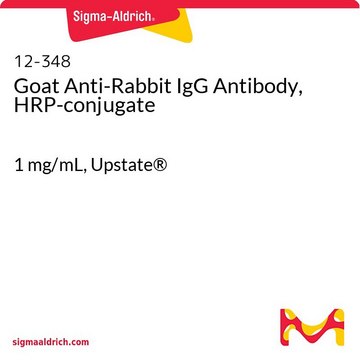400051
Hygromycin B
from Streptomyces sp., >85% (HPLC), liquid, aminoglycoside antibiotic, Calbiochem®
Synonyme(s) :
Hygromycin B, Streptomyces sp.
About This Item
Produits recommandés
Nom du produit
Hygromycin B, Streptomyces sp., Unique aminoglycoside antibiotic that inhibits the growth of prokaryotic (bacteria) and eukaryotic microorganisms (yeasts) and mammalian cells.
Niveau de qualité
Essai
>85% (HPLC)
Forme
liquid
Fabricant/nom de marque
Calbiochem®
Conditions de stockage
OK to freeze
Couleur
amber to brown
Conditions d'expédition
ambient
Température de stockage
2-8°C
InChI
1S/C20H37N3O13/c1-23-7-2-5(21)9(26)15(10(7)27)33-19-17-16(11(28)8(4-25)32-19)35-20(36-17)18(31)13(30)12(29)14(34-20)6(22)3-24/h5-19,23-31H,2-4,21-22H2,1H3/t5-,6+,7+,8-,9+,10-,11+,12-,13-,14-,15-,16+,17+,18-,19+,20?/m1/s1
Clé InChI
GRRNUXAQVGOGFE-KPBUCVLVSA-N
Description générale
Resistance to Hygromycin B is conferred by a gene coding for a phosphotransferase that phosphorylates Hygromycin B, thereby inactivating it (Bilang, R., et al., Malpartida, F., et al.). Hygromycin B is known to selectively penetrate cells that have been rendered permeable by virus infection. This, combined with its potency in inhibiting translation, makes it an effective antiviral agent (MacIntyre, G., et al., Zhou, J., et al.).
The analytical data listed below will vary from lot to lot.
Bioassay: 350-450 U/mg
Concentration: 444,600 U/ml; 394 mg Hygromycin B/ml
Density: 1140-1155 mg/ml
% solids: 34.6%
Fill volumes:
100,000 U = 225 µl
1,000,000 U = 2.25 ml
10,000,000 U = 22.5 ml
250,000 U = 562 µl
5,000,000 U = 11.25 ml
Actions biochimiques/physiologiques
growth of prokaryotic (bacteria) and eukaryotic microorganisms (yeasts) and mammalian cells
protein synthesis at the translocation step on the 70S ribosome and causes misreading of the mRNA
Avertissement
Reconstitution
Note: This product is highly toxic. Read enclosed MSDS before handling.
Autres remarques
Hamada, W., et al. 1994. Curr. Genetics 26, 251.
Hubbard, S. C., et al. 1994. J. Biol. Chem.269, 3717.
Rikkerink, E. H., et al. 1994. Current Genetics25, 202.
Sugimoto, K., et al. 1994. Plant J.5, 863.
Buchschacher, G.L., Jr., and Panganiban, A.T. 1992. J. Virol.66, 2731.
Gaken, J., et al. 1992. Biotechniques13, 32.
Lama, J., and Carrasco, L. 1992. J. Biol. Chem. 267, 15932.
Ma, H., et al. 1992. Gene117, 161.
MacIntyre, G., et al. 1992. Adv. Exp. Med. Biol.276, 67.
Norman, J.A., et al. 1992. Mol. Pharmacol.41, 53.
Bilang, R., et al. 1991. Gene100, 247.
Dale, E., and Ow, D. 1991. Proc. Natl. Acad. Sci. USA88, 10558.
Lee, M.G-S., and Van der Ploeg, L. 1991. Gene105, 255.
Leslie, J.F., and Dickman, M.B. 1991. Applied Environ. Microbiol.57, 1423.
MacIntyre, G., et al. 1991. Antimicrob. Agents Chemother.35, 2125.
Zhou, J., et al. 1991. Gene107, 307.
Bulte, L., and Bennoun, P. 1990. Current Genetics18, 155.
Giordano, T.J., and McAllister, W.T. 1990. Gene88, 285.
Salauze, D., et al. 1990. Antimicrob. Agents Chemother.24, 1915.
Carrasco, L., et al. 1989. Pharmacol. Ther.9, 311.
Crespi, C.L., et al. 1989. Carcinogenesis10, 295.
Damm, B., et al. 1989. Mol. Gen. Genetics217, 6.
Egelhoff, T.T., et al. 1989. Mol. Cell. Biol.9, 1965.
Kronstad, J.W., et al. 1989. Gene79, 97.
Perlin, D.S., et al. 1988. J. Biol. Chem.263, 118.
Cullen, D., et al. 1987. Gene57, 21.
Gonzalez, A., et al. 1978. Biochim. Biophys. Acta521, 459.
Malpartida, F., et al. 1983. Biochem. Biophys. Res. Commun.117, 6.
Rao, S.N., et al. 1983. Antimicrob. Agents Chemother.24, 689.
Informations légales
Mention d'avertissement
Danger
Mentions de danger
Conseils de prudence
Classification des risques
Acute Tox. 1 Inhalation - Acute Tox. 2 Dermal - Acute Tox. 2 Oral
Code de la classe de stockage
6.1A - Combustible acute toxic Cat. 1 and 2 / very toxic hazardous materials
Classe de danger pour l'eau (WGK)
WGK 3
Certificats d'analyse (COA)
Recherchez un Certificats d'analyse (COA) en saisissant le numéro de lot du produit. Les numéros de lot figurent sur l'étiquette du produit après les mots "Lot" ou "Batch".
Déjà en possession de ce produit ?
Retrouvez la documentation relative aux produits que vous avez récemment achetés dans la Bibliothèque de documents.
Les clients ont également consulté
Notre équipe de scientifiques dispose d'une expérience dans tous les secteurs de la recherche, notamment en sciences de la vie, science des matériaux, synthèse chimique, chromatographie, analyse et dans de nombreux autres domaines..
Contacter notre Service technique



